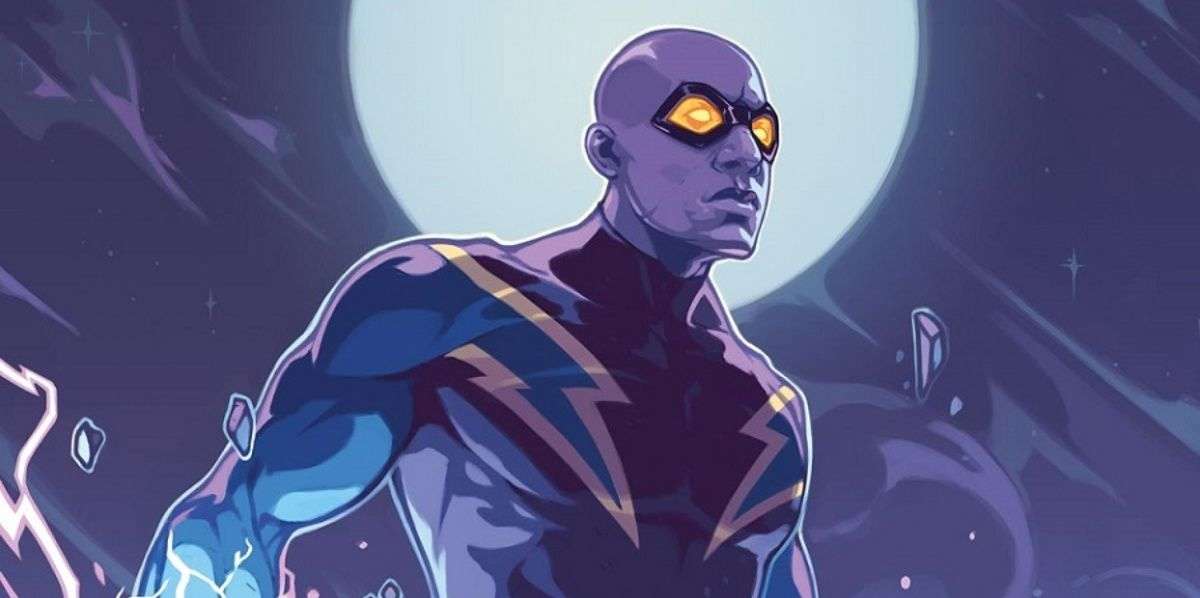Create a free profile to get unlimited access to exclusive videos, sweepstakes, and more!
John Ridley on how The Other History of the DC Universe is coming at just the right time

John Ridley and Giuseppe Camuncoli's The Other History of the DC Universe came about thanks to another book: The History of the DC Universe, the 1986 two-issue comic from George Perez and Marv Wolfman.
At the DC Fandome panel for his upcoming miniseries The Other History of DC Universe, Ridley admits that he found inspiration from the duo's book that mapped out the entire DC world like a genuine timeline. Once he read it, he knew that he wanted to do that again, but for characters of color who had different viewpoints on various events that took place. First among them was Black Lightning, who resonated with Ridley not just because he was Black, but because he was a teacher like Ridley's mother. Other History's debut issue will follow Jefferson Pierce in the late '70s, allowing his love for the character to shine through.
Future issues of Other History will take the timeline forward and put other minority characters in the spotlight. Mal and Karen Duncan (Guardian and Bumblebee, respectively) take center stage for issue #2, with Ridley saying that Karen was "the Hidden Figures character" before we knew about the black women working at NASA, and he wanted to use the pair to show young people of color who had a working relationship. (Being able to "fix" Mal, who he never thought was used well in the Teen Titans, was just an added bonus.) Likewise, Katana and Renee Montoya will headline issues #3 and #4, both exploring their characters' viewpoints through the years and what it was like to be women of color.
The fifth and final issue of Other History comes full circle, focusing on Jeff's daughter Anissa, aka Thunder. "I thought it was very important to bookend that with a female character of color," Ridley says. Anissa's issue will focus on the legacy of being Black Lightning's daughter while also forging her own path, with Ridley making a tacit admission that as much as his generation has tried making a better world for their kids, that hasn't happened. Through the shifting viewpoints and years, Ridley hopes that readers will come away from the book learning not just about the characters, but lessons about American history.
For Camuncoli, it was Ridley's involvement with the book that got him to sign on, and he admits that he didn't know much about the characters featured, even though he's drawn some a handful of time. (He's a big fan of Teen Titans Go! and DC Super Hero Girls.) But it was thanks to the writing, which Camuncoli says were "so powerful, they made my jaw drop," that he found himself learning about American lives and history. He also made sure to be respectful when it came to drawing the characters in their costumes, considering the subject matter at hand.
Being respectful is something both Camuncoli and Ridley stressed during their panel. "I never want to portray people of color and our struggles as always having been victims," Ridley swore. "I didn't want to portray other individuals as victims...I built stories for hope." To him, that's a feeling that only graphic novels can provide, and he was more than thankful to DC for letting him take time to work on it. "It's neccessary more now than ever."
The Other History of the DC Universe #1 hits shelves in November.
Click here for more of SYFY WIRE’s coverage of DC FanDome.














